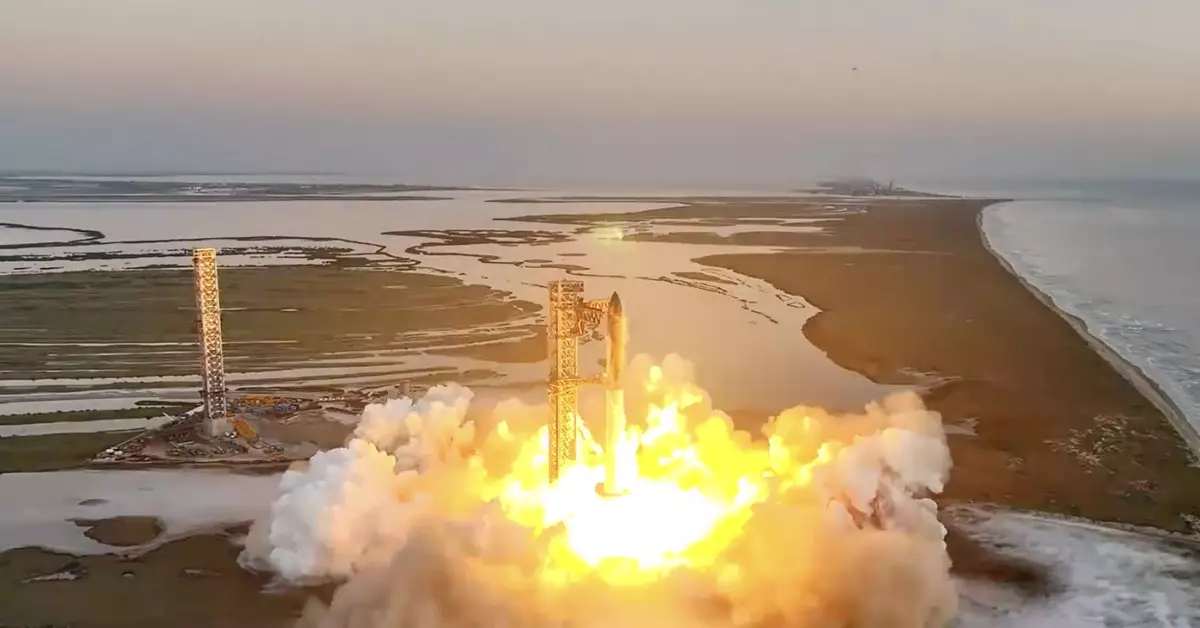On a bright morning in South Texas, the skies reverberated with excitement as SpaceX executed its fifth test flight of the much-anticipated Starship. At 8:25 AM ET, enthusiasts and experts alike held their breath as the countdown culminated in a graceful liftoff. This date, marked by technological triumphs, represents a significant milestone in both aerospace engineering and the future of human exploration beyond our planet.
What set this test apart was not merely the flight itself, but the innovative approach SpaceX took to recover the Starship Super Heavy booster. This time, the booster made history by successfully landing back at its designated launch pad, where it was deftly “caught” by a specialized apparatus known as the “chopsticks.” This ingenious system marks a departure from earlier attempts that had resulted in more conventional crash landings, showcasing SpaceX’s ongoing evolution in reusability technology. This successful retrieval highlights the company’s commitment to sustainability in space travel—minimizing waste while maximizing efficiency.
While landing the booster was a highlight, the mission’s culmination relies on the subsequent phases. With plans to return the Starship to the oceans of the Indian Ocean, reminiscent of prior tests, the focus now shifts to the vehicle’s ability to safely navigate and complete an orbital reentry sequence. Completing this full cycle is essential for SpaceX as it gears up to transport cargo and crew into space, ultimately paving the way for future missions that is aimed at Mars colonization and sustained space exploration.
Interestingly, the road to this pivotal test was not entirely smooth. The Federal Aviation Administration (FAA) granted SpaceX approval less than a week before liftoff. Originally slated for November, the expedited assessment by the FAA and its collaborators marked a turning point in the trajectory of the Starship program. This agility in regulatory processes underscores a willingness to embrace the burgeoning potential of commercial spaceflight, although it also raises questions about safety standards and oversight in a rapidly evolving industry.
As we reflect on this successful test flight, the implications for both SpaceX and the broader space industry cannot be overstated. Successful recovery and reusability of launch systems speak to the future of cost-effective and efficient space travel. If SpaceX can continue to refine its technologies while maintaining safety standards, humanity’s aspirations for deeper space exploration could soon translate from dreams to reality, making the cosmos more accessible than ever before.
SpaceX’s recent achievements with Starship are not merely technical feats; they are emblematic of a larger ambition—one that could redefine our relationship with space. As we await further developments, one thing is clear: the future of space exploration is not only bright but also laden with possibilities.


Leave a Reply